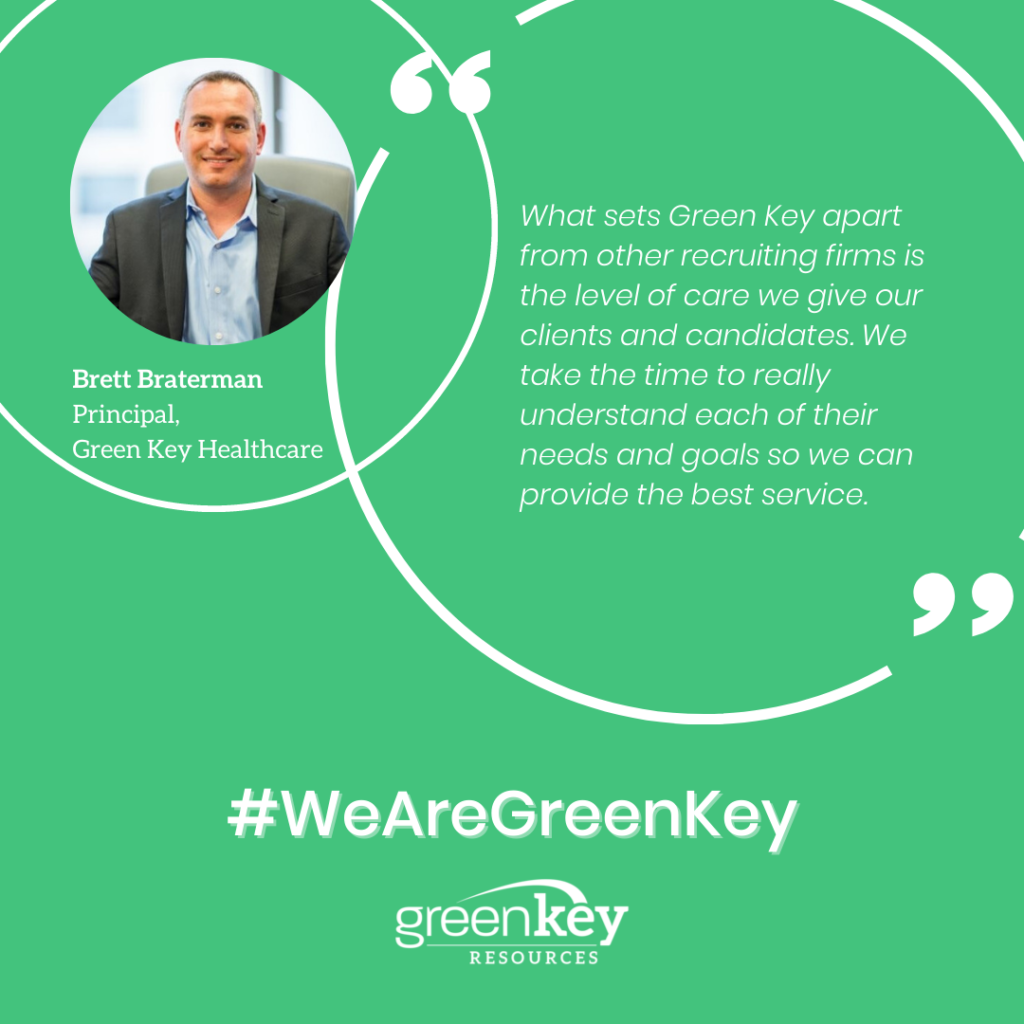Ever wondered what it’s like to work for a recruiting firm that puts people first? You’re in the right place!
Welcome to #WeAreGreenKey, where we shine a spotlight on the people behind our powerhouse recruiting team.
This week, we’re getting to know Green Key Healthcare with Brett Braterman.
Brett Braterman has been a part of the Green Key Healthcare team since 2009. In just over a decade at Green Key Resources, Braterman has served as Director and Executive Director of Healthcare Recruiting and is now a Principal of the Healthcare Recruiting Division.
What inspired you to pursue a career in recruitment?
It is really rewarding when you can help someone land their dream job.
What sets Green Key apart from other recruiting firms?
The level of care we give our clients and candidates. We take the time to really understand each of their needs and goals so we can provide the best service.

Where has Green Key Healthcare provided service that is hard to match in an internal hiring team?
Green Key Healthcare recruiters offer industry expertise and maintain trusting relationships with decision-makers at healthcare companies.
Thanks to our connections and experience in healthcare, we’re able find and place candidates for niche positions. Essentially, we can find that needle in a haystack much faster than an internal hiring team.
What are the next steps for candidates interested in expanding their healthcare job search?
Get in touch with our team! Visit https://www.greenkeyllc.com/area/healthcare/ to fill out a candidate contact form.
Interested candidates can also browse current openings in healthcare by visiting the Green Key jobs board.